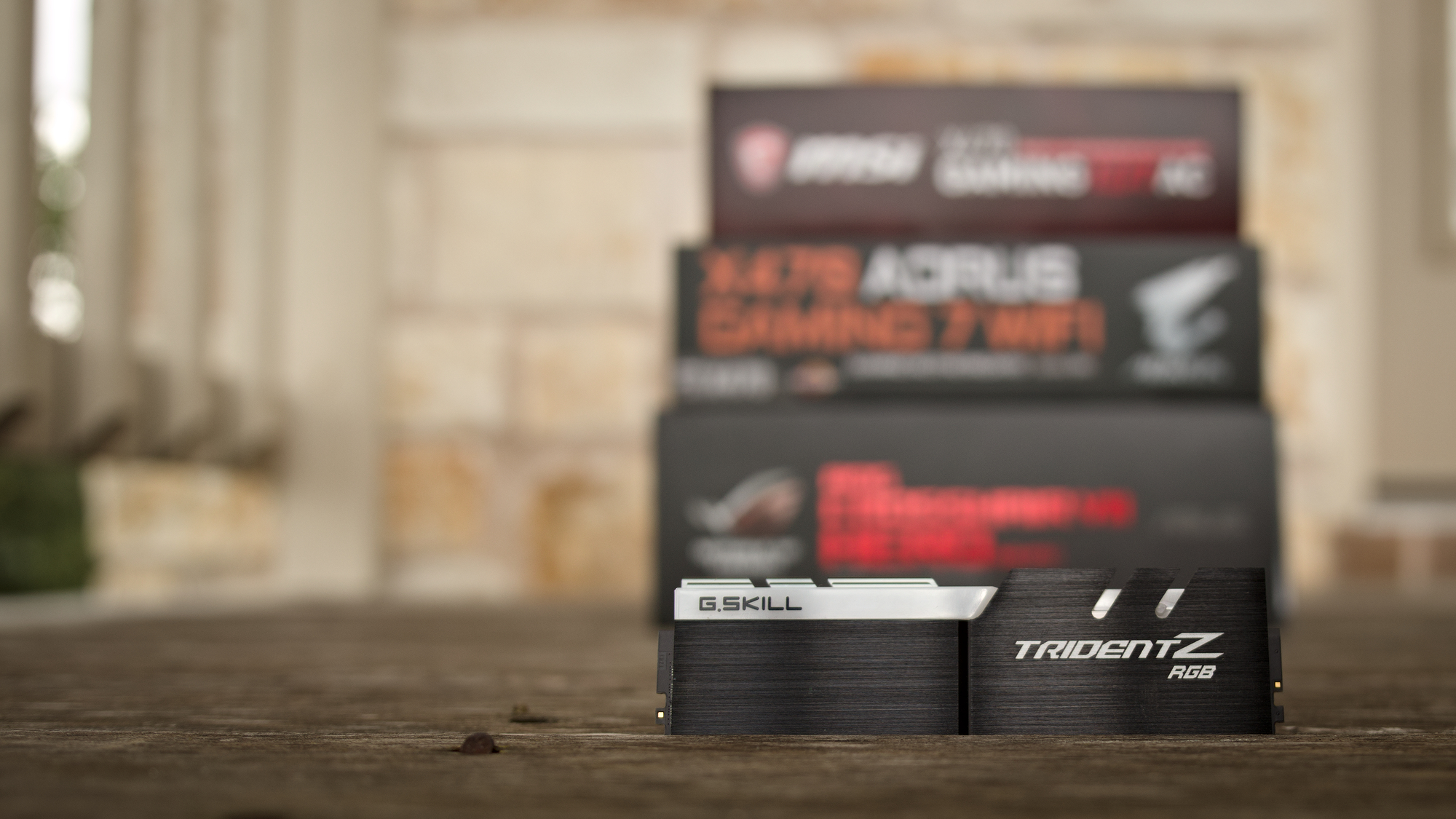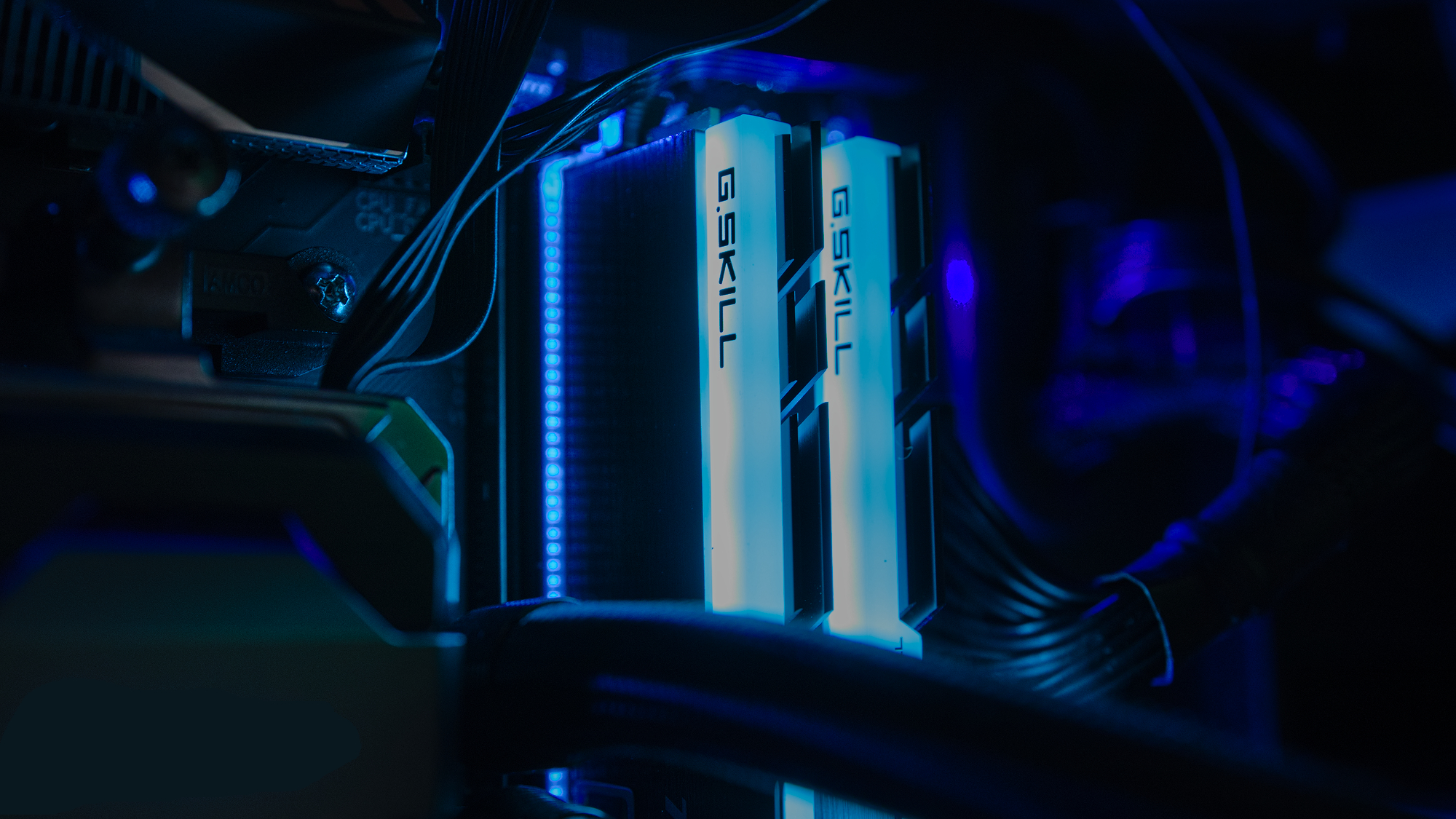A Second Look: DDR4 Motherboard Performance vs Data Rate
Problem Statement and Product Descriptions
As a hardware reviewers, we like to keep our testing rigs consistent and bug-free in order to maintain data confidence and consistent toolsets for test execution. However, sometimes we get stuck in a routine and we begin to prefer certain brands or configurations. In a Team Group memory review, we found that particular memory kit was performing well in only certain motherboards. That got us thinking: Are we doing this all wrong?
In that review, we noted that particular sets of RAM work better with particular board manufacturers and could be problematic in non-sanctioned systems. On the surface, this may not seem like a major issue, especially if you know going into a buying decision that Team Group's memory tends to work best on Asus motherboards. But according to the testing data we have, 7-zip is showing a 10% performance advantage on the better-matched systems and F1 2015 shows a stark 23% increase in framerates at 1080P. Clearly that Team Group kit works well with that Asus Z390 motherboard, but there seems to be some sketchy UEFI magic going on behind the scenes.
In order to investigate, we’re going to be changing a few variables today. First, we’re getting a new set of eyes to look at this data. Next, we’re going to see how AMD’s motherboards fare with this particular issue. Lastly, we’re going to be throwing some of our top-rated AMD X470 motherboards into the ring to see just how finicky the interface is across vendors. Perhaps our odd Team Group results come from an Intel-specific "feature" that Asus uses, but only time (and lots of testing) will tell.
Test System Configuration
| CPU | Ryzen 7 2700X |
| CPU Cooler | Corsair H110i |
| Memory | G.Skill AMD DDR4-3600 (2x 8GB) |
| Motherboard | Aorus X470 Gaming 7 Wi-Fi |
| Motherboard | MSI X470 Gaming M7 AC |
| Motherboard | Asus X470 Crosshair VII Hero (Wi-Fi) |
| SSD | OCZ RD400 |
| Power Supply | Corsair AX860 |
Drivers and Software
| Sound | Integrated HD audio |
| Network | Integrated Gigabit networking |
| Software | |
| OS | Microsoft Windows 10 Anniversary Update |
| Graphics | Nvidia |
| Chipset | AMD X470 |
Since AMD's latest X570 chipset boards just launched, they weren't yet available when we were working on this story. So we’re sticking with X470 because it is very stable, less expensive, and, honestly, very capable of hitting top memory data rates. Our trusty Ryzen 2700X will also be driving our memory traffic since we know how its memory controller functions and we intend on getting consistent results. Our target motherboards today will be the Gigabyte X470 Aorus Gaming 7, MSI X470 Gaming M7 AC, and the Asus X470 Crosshair Hero VII (WiFi), all of which performed admirably.
Benchmark Settings
| Synthetic Benchmarks and Settings | |
| SiSoftware Sandra | Version 2016.03.22.21 Memory Bandwidth and Memory Latency |
| Application Tests and Settings | |
| Blender | Version 2.68a BMW 27 CPU Render Benchmark |
| 7-Zip | Version 16.02 THG-Workload (7.6 GB) to .7z, command line switches "a -t7z -r -m0=LZMA2 -mx=9" |
| Game Tests and Settings | |
| F1 2015 | 2015 Season, Abu Dhabi Track, Rain 1920x1080 - UltraHigh Preset, 16x AF |
| Metro Last Light Redux | Version 3.00 x64 Very High Quality, 1920x1080, Very High Tesselation |
Beyond that, our memory test methodology has not changed significantly across processor brands and we hope to replicate our data collection across the test platforms. In order to reduce test time, we will only be looking at data across three data rates: DDR4-2933, DDR4-3200, and DDR4-3600. To increase our chances with compatibility, we will only be using two 8GB sticks of DDR4-3600 RAM from G.Skill (which we're also working on reviewing). And to keep things consistent across runs, XMP voltages and timings will be utilized across the test points to help isolate performance to the data and not other factors.
MORE: Best Motherboards
MORE: How To Choose A Motherboard
Get Tom's Hardware's best news and in-depth reviews, straight to your inbox.
MORE: All Motherboard Content
- 1
- 2
Current page: Problem Statement and Product Descriptions
Next Page Test Results: Applications and Games-
setx It would be much more interesting to get the root case of that strange XMP behavior on ASUS (likely, subtimings) than just testing defaults of some more boards.Reply
"From Asus’ perspective, there is no denying the wealth of options available for overclocking, but our base level of memory overclocking does leave us wanting.", "If more basic overclocking is desired, we definitely recommend the MSI or Gigabyte boards" – what are those magic different "overclocking options" you are talking about when all what was tested in article was switching basic memory speed and enabling XMP? -
washmc Maybe I misunderstood the point of the test but I would have liked to see both more boards used and more RAM modules tested. 5 should be the minimum boards and upwards of 10 would be preferred. Also testing different branded RAM would give more insight I feel as to where the inconsistencies lie. Or maybe I should say RAM from different manufacturers, not necessarily the resellers.Reply -
honujab A question hard to answer is: should spend money on memory, or processor, or GPU?Reply
We really do not have the benchmark data to back the answer.
TH should test different RAM speeds for the best bang for the buck combinations of CPU+GPU -
GetSmart There could be slight clockspeed and timing variance between those motherboards (if these use different crystal oscillators and clock generators).Reply -
TheTerk Reply
Josh, I think adding more boards would be a great exercise but even as a motherboard reviewer, I do not have 10 X470 or B450 boards at my disposal. The three chosen today are the best of each brand and likely prove trends in design thinking for each of the companies.Josh Mahurin said:Maybe I misunderstood the point of the test but I would have liked to see both more boards used and more RAM modules tested. 5 should be the minimum boards and upwards of 10 would be preferred. Also testing different branded RAM would give more insight I feel as to where the inconsistencies lie. Or maybe I should say RAM from different manufacturers, not necessarily the resellers.
As for memory, I only have a couple of kits that reach the higher data rates, and will be grabbing some ddr4-3733 for a review shortly.

